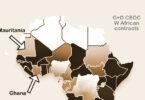On Monday, Benoît Cœuré, the head of the BIS Innovation Hub, said “when it comes to wholesale CBDCs it’s very likely that blockchains will be involved.” Many of the world’s central banks are collaborating on CBDC research with the BIS Innovation Hub, which recently published a CBDC paper.
Cœuré was talking during the 2020 OECD Global Blockchain Policy Forum.
There are two choices for central bank digital currencies (CBDC), token-based, which implies blockchain or account-based. But most of the financial institutions targeted by a wholesale CBDC already have central bank accounts. Referring to these accounts, Cœuré said, ‘that’s not wholesale CBDC, that’s the traditional way to do it.” And it’s often tokens that are desirable.
A common driver for a wholesale CBDC is the adoption of distributed ledger technology (DLT) by many financial market infrastructures (FMIs) around the world. Tokenizing central bank money makes on-chain payments far easier. Hence, the Swiss National Bank and the SIX Digital Exchange have been exploring a wholesale CBDC for a while. They’re now collaborating with the BIS and plan to share more details in December.
If there’s no CBDC, the other alternative is to integrate the DLT ledger with the existing payment rails, the real time gross settlement system (RTGS). In Switzerland’s case, the stock exchange owner SIX happens to operate the SECOM system as well.
We’d present a third route. And that’s the FMI’s choose not to settle in central bank money and instead use private money. However, Cœuré asserted that to ensure the stability of global financial systems, “you need key financial market infrastructures to be settled in central bank money.”
That didn’t sound so positive for Fnality, which is creating a settlement system precisely for these FMIs, in which account balances at central banks back the tokens. Later Cœuré talked about the coexistence of stablecoins with CBDC, or in the case of wholesale CBDC, he said that “settlement tokens backed by central bank money are also part of the discussion.”
Cœuré highlighted another use case for wholesale CBDC, which is for emerging market countries that lack an RTGS. The wholesale CBDC could be a way to achieve a similar result.
Wholesale CBDC challenges
Wholesale CBDCs are quite different from retail CBDCs and come with their own unique challenges. Cœuré divided the issues into two buckets, those that apply equally to RTGS systems and those that are new.
The biggest challenge is a fresh one, the potential fragmentation between account-based and tokenized money. A tokenized wholesale CBDC is a new form of money. The question is how the two coexist and whether only account-based money is used for conducting monetary policy. On the other hand, if tokens are treated differently, might bankers not try to game the system (our observation, not Cœuré’s). The central banker noted the potential complexities for implementing monetary policy.
A typical issue that CBDC has in common with RTGS is whether or not to allow non-banks to have access, as the Bank of England and others have publicly debated. There’s also the question of whether to offer interest in a world of negative rates. How is overnight credit provided and do the access hours need to be extended beyond working hours? As financial systems become ever more interconnected and settlement times shorten, the working hours in one country can have little to no overlap with others on the opposite side of the world.
Overall, Cœuré was keen to both maintain central bank money as a public good and encourage innovation. “We should let the private sector innovate. And for that, we need diversity and we need an ecosystem. But we want central bank money to be at the heart of that,” he said.







